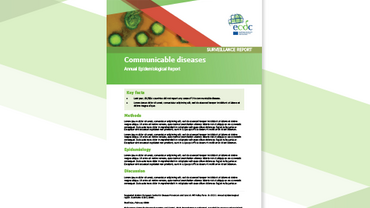Surveillance of invasive bacterial diseases in Europe, 2011
This report describes the occurrence of invasive bacterial diseases in Europe during 2011, providing information on the epidemiological trends, circulating strains and morbidity caused by invasive bacterial diseases resulting from Streptococcus pneumoniae, Haemophilus influenzae and Neisseria meningitidis in Europe. This is the first time that all three diseases have been included in an ECDC surveillance report.
Executive Summary
Invasive bacterial diseases remain an important public health issue across Europe and continue to cause serious preventable disease in several countries, particularly among the young and elderly.
ECDC has published two reports describing the occurrence of invasive bacterial diseases in Europe in 2010 and 2011. Both reports include data on H. influenzae disease and invasive meningococcal disease, with the 2011 report also including data on invasive pneumococcal disease.
Although the surveillance systems for invasive bacterial diseases continue to be diverse across Europe and case definitions differ for some countries, certain trends in incidence and serogroup distribution can be deduced from the data provided.
In both 2010 and 2011, the highest notification rate was observed in non-capsulated strains among infants for invasive H. influenzae disease. For invasive meningococcal disease, serogroup B was the predominant cause of cases in both years. For invasive pneumococcal disease in 2011, the majority of infections were caused by serotypes covered by pneumococcal conjugate vaccine 13, although non-vaccine serotype 6C is becoming more prominent.





